Uncover the vital role animals played in ancient Egyptian religion and daily life, from revered creatures like cats, crocodiles, and ibises to their practical use in farming, transportation, and sacred rituals. Explore their deep symbolism and connection to the gods.
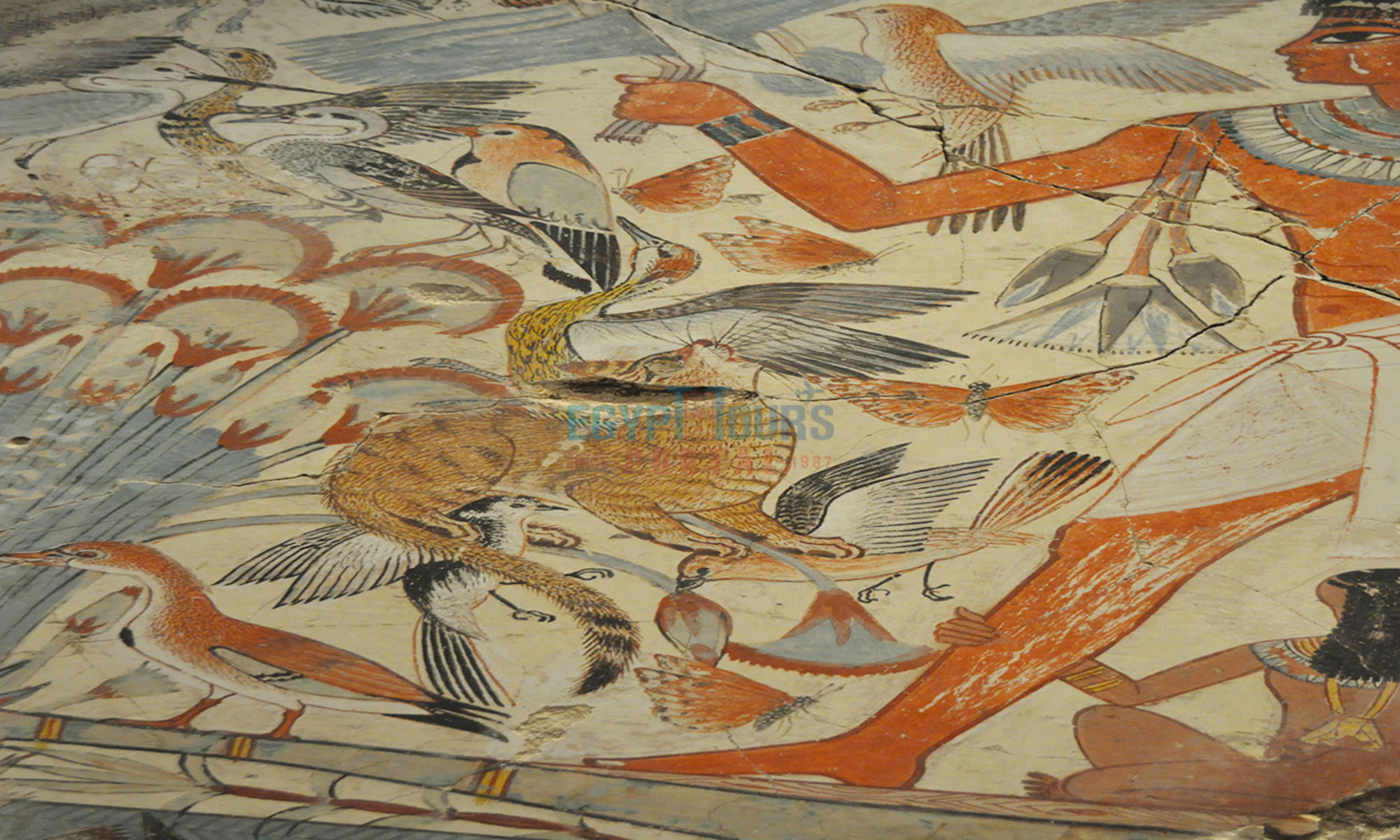
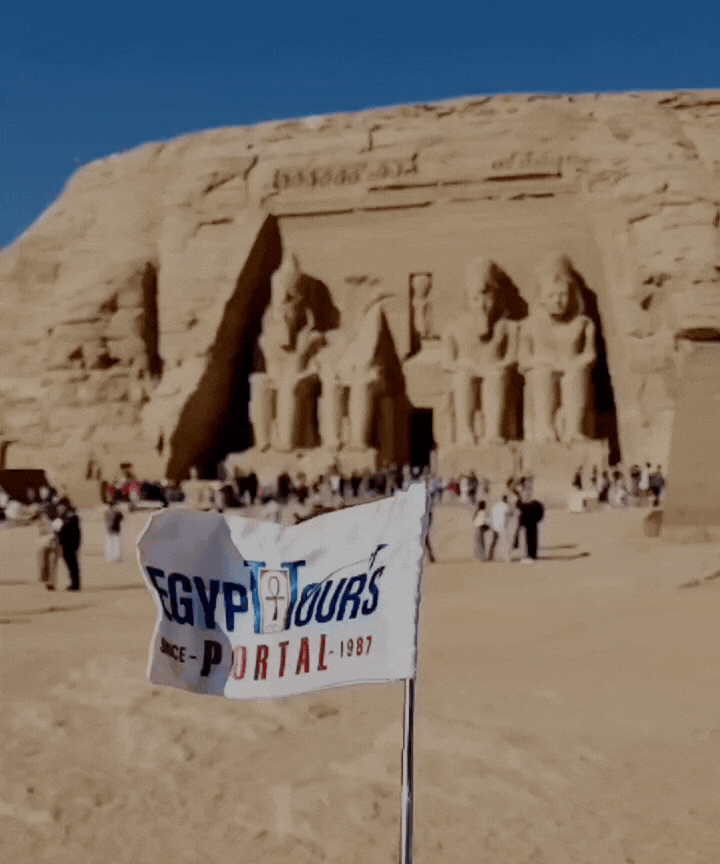
Animals in ancient Egypt were integral to the civilization's identity, serving spiritual, social, and practical roles. They were revered as sacred beings, embodying divine power and playing essential roles in agriculture, transportation, companionship, and religious rituals.
Animals were not only a crucial part of daily life but also symbols of cosmic order, linking humanity to the gods. Their significance is vividly preserved in tomb art, temple carvings, statues, and hieroglyphs, which highlight their multifaceted contributions to one of history’s most remarkable civilizations.
The Egyptians saw animals as reflections of divine will, attributing human and supernatural traits to their behavior. This perspective gave rise to the worship of sacred animals and their integration into Ancient Egyptian Mythology. The Egyptians recognized their practical importance, employing animals for food, labor, and security. By intertwining spirituality with practicality, animals became a cornerstone of Egyptian life and legacy.
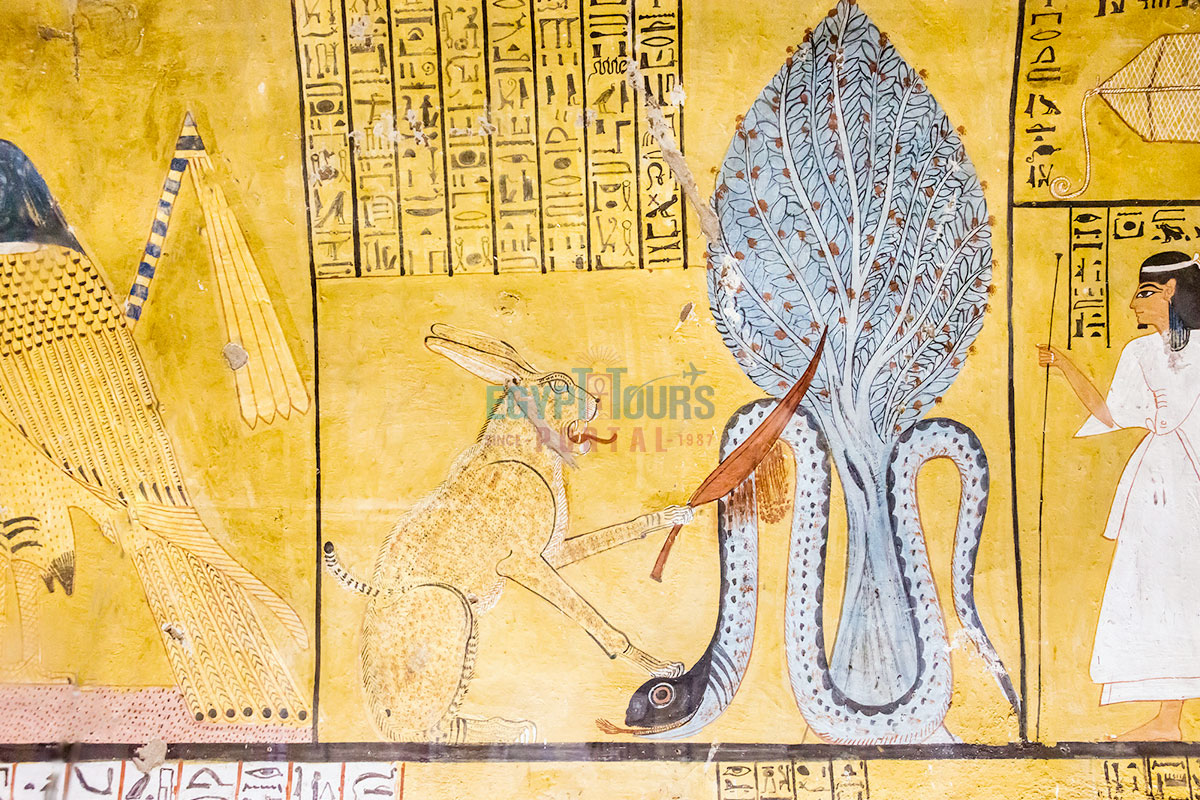
Ancient Egyptians considered animals divine gifts, embodying the essence of gods and bridging the gap between the human and spiritual realms. Many animals, such as crocodiles representing Sobek or cats linked to Bastet, were viewed as sacred manifestations of deities. Temples dedicated to animal deities often housed these creatures, cared for by priests, and adorned with offerings.
Explore the relationship between the ancient Egyptian Religion and the way of life of the ancient Egyptians plus their unique animal forms.
Read More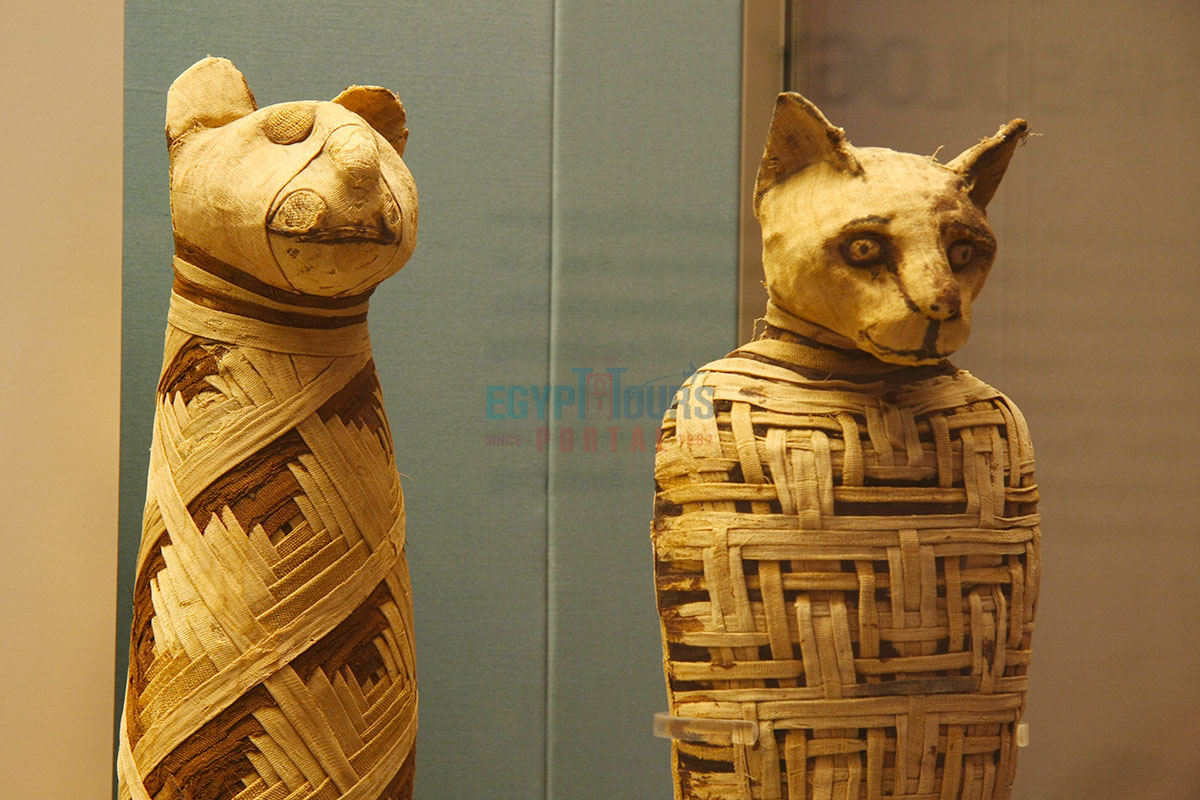
The Egyptians cherished their pets, believing they would reunite in the Ancient Egyptian Afterlife. Tomb discoveries, such as Queen Isiemkheb’s mummified gazelle and Maatkare Mutemhat’s pet monkey, emphasize this deep bond. Mummified animals, including cats, dogs, and ibises, were often buried alongside their owners to provide companionship in the next world.
The Ancient Egyptian Mummification of animals became widespread during the Late Period (664–332 BCE), with millions of mummified specimens uncovered in sites like Saqqara and Tuna-el-Gebel. These animals served as votive offerings to deities, spiritual protectors, or symbols of devotion. For instance, Saqqara alone revealed over eight million mummified dogs, reflecting their sacred status as emissaries of Anubis.

The diverse ecosystem of the Nile River basin gave rise to a range of animals revered for their symbolic and practical importance.
Domesticated as early as the Middle Kingdom (c. 2000 BCE), cats were prized for their ability to protect homes from pests. Their grace and independence were seen as divine attributes, earning them a central role in the worship of Bastet. Cats were commonly depicted in tomb paintings, often shown lounging beneath chairs or interacting with their owners.
Crocodiles were feared yet revered, embodying Sobek, the god of fertility and strength. Kept in temple pools and mummified as sacred offerings, they highlighted the Egyptians’ dual respect for nature’s power and protection. Hippos, associated with Taweret, the goddess of childbirth, symbolized both chaos and protection. Their depiction in hunting scenes demonstrated pharaohs’ ability to control nature and restore balance.
Falcons and hawks symbolized royal authority through their association with Horus. The ibis, sacred to Thoth, represented wisdom and was frequently mummified as a votive offering.

Animals often appeared in Egyptian mythology, either as full representations of deities or as hybrids combining human and animal traits.
The fusion of animal traits with divine qualities allowed Egyptians to explore complex concepts of power, protection, and cosmic order.
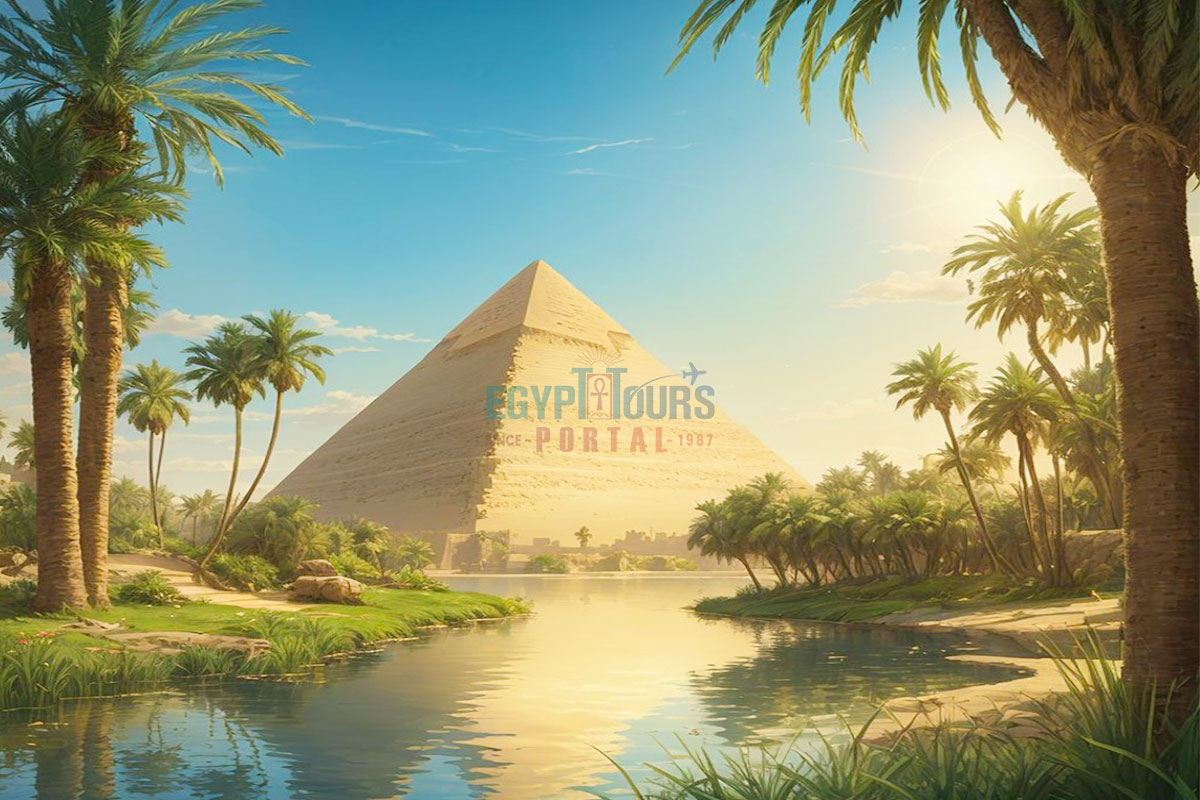
The Nile River and its surrounding lands provided a rich habitat for a variety of animals, each contributing to Egyptian life in unique ways.

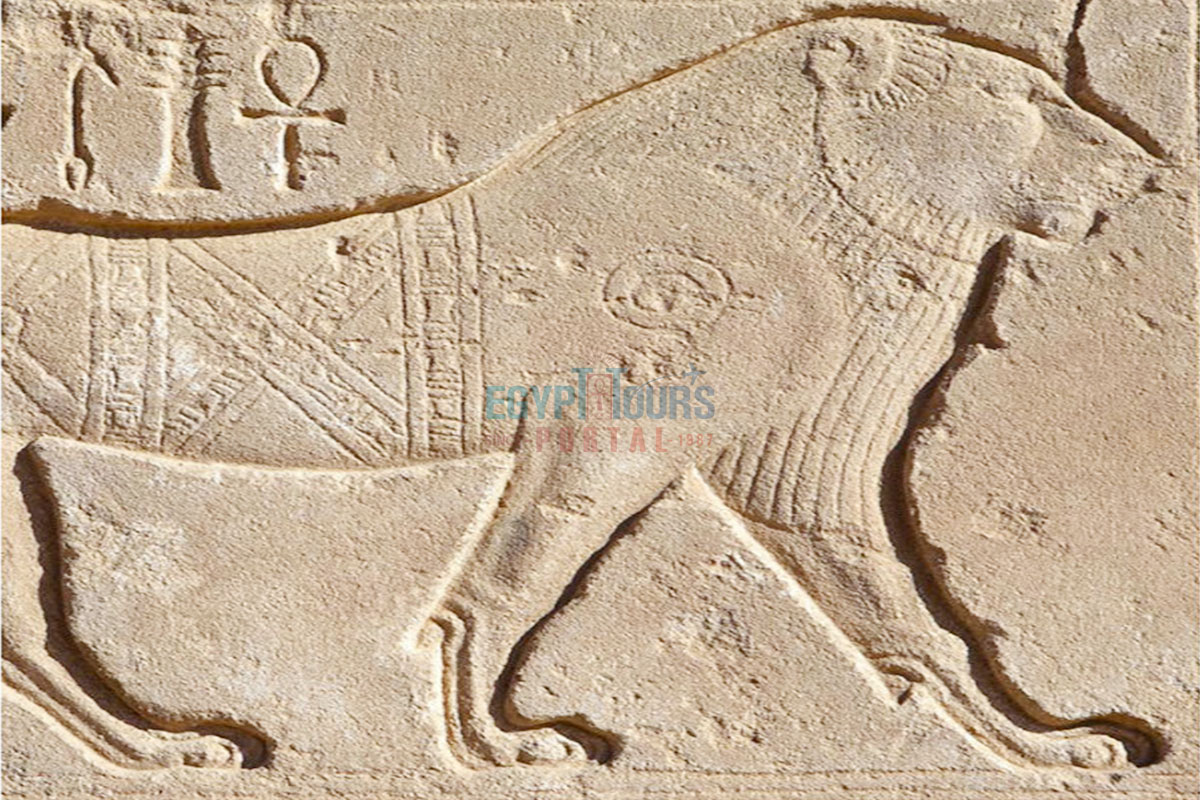
Lions and leopards symbolized strength, agility, and kingship. Leopards adorned the robes of high priests, reflecting their status as sacred animals. Lions were often hunted by Pharaohs as a demonstration of power.
While rare in Egypt, elephants were imported for military and ceremonial purposes. Their size and strength symbolized power, particularly during the New Kingdom.
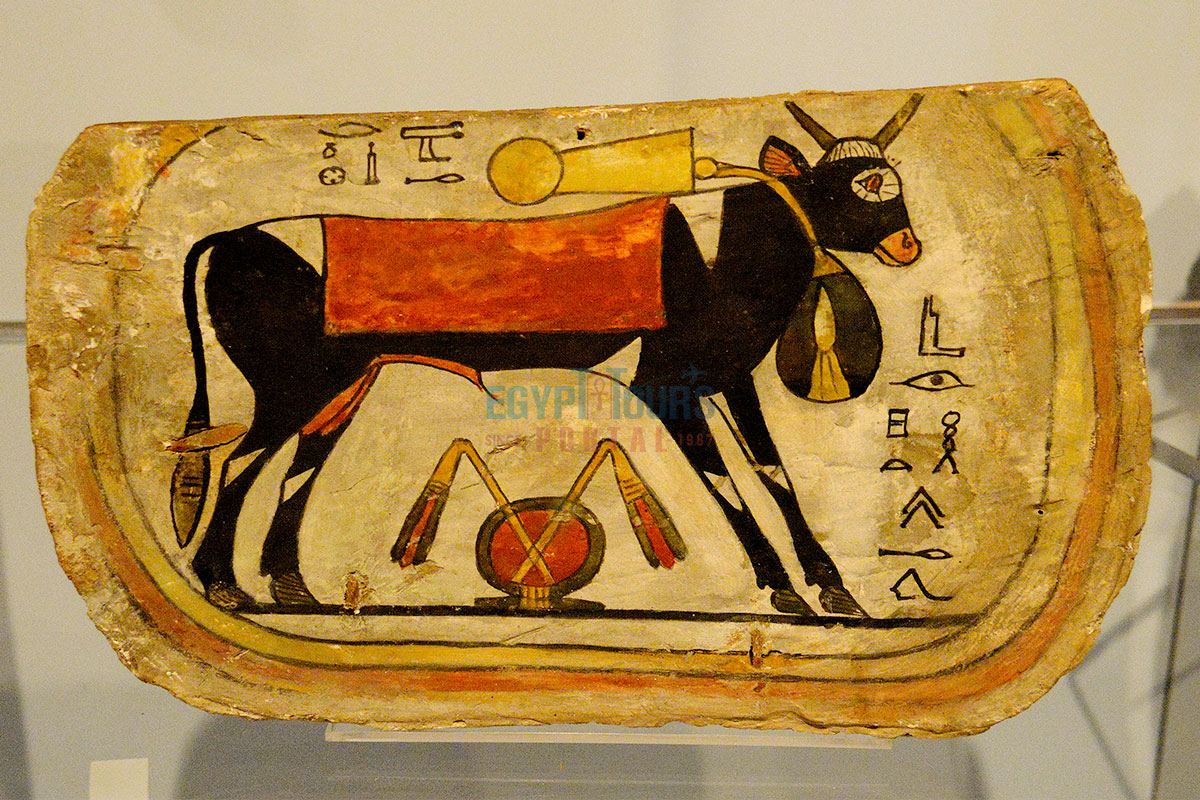
Animals were central to ancient Egyptian religious practices, embodying divine powers and serving as conduits between the mortal and spiritual realms. Many animals were regarded as physical manifestations of deities, while others symbolized specific divine attributes.
These sacred beings participated in daily temple rituals and were venerated in both state and household worship. The role the animals played very deeply in the worship process which is shown in every aspect of society as seen in:
The Apis bull, representing Ptah and Osiris, was kept in grand Egyptian Temples such as those in Memphis. Identified by specific physical markings, the Apis bull was given royal treatment, adorned with gold and fine fabrics, and fed lavish meals.
Upon its death, it was embalmed with elaborate ceremonies and buried in the Serapeum at Saqqara. Crocodiles, sacred to Sobek, were kept in temple pools, particularly in Crocodilopolis (modern-day Fayoum). They were adorned with jewels and fed high-quality food, reflecting their divine status.
Cats and dogs held a prominent place in domestic religion. Statues and amulets of Bastet (goddess of home and fertility) and Anubis (protector of tombs and guide to the afterlife) were common in homes. Cats, in particular, were thought to bring divine protection and good fortune to households. Birds like falcons and ibises, associated with Horus and Thoth, were also kept by families as symbols of divine guidance and knowledge.
Animals featured in grand religious festivals, such as the “Running of the Apis” to honor the bull’s divine nature or ceremonies dedicated to Bastet at Bubastis. Processions often included sacred animals, carried in ornate shrines to demonstrate the connection between humans and the gods.
Animal mummification was a deeply spiritual practice, symbolizing eternal life and the animal’s role in the divine order. By the Late Period (664–332 BCE), the mummification of animals became widespread, with millions of specimens uncovered in necropolises across Egypt.

The ancient Egyptians relied on hunting and fishing for sustenance, sport, and symbolic displays of power. Depictions of these activities in tombs and temple reliefs reveal their importance in daily and ceremonial life.
Swamp hunting involved capturing waterfowl and crocodiles using clap nets and boats. These activities are vividly depicted in tomb paintings, such as those in the tomb of Ti (c. 2500 BCE), which show workers retrieving nets brimming with birds.
Throwing sticks were used to stun birds in marshes and along the Nile’s banks. The tomb of Nebamun (c. 1350 BCE) features scenes of this practice, emphasizing its role as both a source of food and a leisure activity for the elite.
Fishing provided a vital food source and was carried out using nets, spears, and hooks.

Oxen and Donkeys were used for plowing fields and carrying goods. Donkeys were particularly valued for their endurance and affordability.
Horses were Introduced around 1500 BCE, horses transformed transportation and warfare. They were used in chariotry, a key innovation during the New Kingdom.
Camels, Although introduced later, camels became vital for long-distance trade across deserts.
Fish, fowl, and livestock were essential components of the Egyptian diet. Pictorial evidence from tombs shows a thriving culture of fishing, hunting, and animal husbandry. Livestock like sheep and cattle provided not only meat but also milk, cheese, and hides for daily use.
Learn about the rituals, beliefs, and customs of the daily life of the ancient Egyptians.
Read More
Ancient Egyptian Art in tombs from the Old Kingdom to the New Kingdom is rich with animal imagery, depicting them as both divine symbols and practical assets. For example:
Religious texts like the Book of the Dead and the Pyramid Texts frequently mention animals as protectors, guides, and symbols of divine power. For example:
Animals played a vital role in ancient Egypt’s religious, cultural, and practical spheres. As sacred beings, they were manifestations of divine power and participants in rituals. As practical assets, they supported daily life through labor, transportation, and sustenance.
Their representation in art, mummification practices, and religious texts underscores their enduring significance in a civilization that viewed nature as a reflection of divine order.
If anyone desires to explore the many animalistic wonders of Egypt, then everyone should book one of our amazing Egypt tours from USA or Nile Cruises, to witness the oldest wonders ever created in history.
Private 4 Days Cairo Tour Packages for American Travelers 4 days Cairo Egypt Tour pa...
Tour Location: Cairo – Giza...
5 Days Cairo and Alexandria Tour Package For American Travelers 5 days Cairo and Ale...
Tour Location: Cairo/Giza/Alexandria...
6 Days Cairo, Luxor & Aswan Tour Package For American Travelers 6 days Cairo, Lu...
Tour Location: Cairo/Giza/Aswan/Luxor...
Amazing 7 Days Cairo and Hurghada Holiday for American Travelers 7 Days Cairo & ...
Tour Location: Cairo – Giza – Hurgh...
Animals were integral to ancient Egyptian religion, and often associated with deities. For instance, cats were linked to Bastet, the goddess of home and fertility, while crocodiles were connected to Sobek, the god of the Nile and fertility.
Several animals held sacred status, including cats, ibises, crocodiles, and scarab beetles. Each was associated with specific gods and symbolized various aspects of life and the divine.
Animals frequently appeared in art and hieroglyphs, symbolizing deities, and concepts, or serving as decorative elements. For example, the scarab beetle represented transformation and rebirth.
Yes, ancient Egyptians domesticated animals such as cats, dogs, cattle, and donkeys. Cats were kept as pets and for pest control, while cattle and donkeys were essential for agriculture and transportation.
Cats were highly revered, symbolizing protection and grace. They were associated with the goddess Bastet and were often kept as household pets. Killing a cat, even accidentally, was considered a grave offense.
Animals were used for various purposes: cattle for milk and meat, donkeys for transportation, and dogs for hunting and protection. Birds and fish were also hunted for food.
Yes, animals, especially those associated with deities, were mummified as offerings to the gods. This practice underscored their religious significance.
Hunting and fishing were both sustenance activities and leisure pursuits. Techniques like fowling with sticks and spear fishing were common, and scenes of these activities were depicted in tomb paintings.
Dangerous animals like crocodiles and hippos were both feared and revered. Crocodiles were associated with Sobek and were sometimes kept in temples, while hippos were hunted due to the threat they posed.
The Scarab Beetle Symbolized Transformation, Rebirth, and the Sun's Movement. It Was Associated With the God Khepri and Was a Common Motif in Amulets and Jewelry.
The entire country of Egypt deserve to be explored with its every heavenly detail but there are places that must be seen before any other such as the breathtaking Hurghada's red sea, The wonders of Cairo the pyramids of Giza, the great sphinx, the Egyptian Museum, Khan El Khalili Bazaar, the wonders of Luxor like Valley of the Kings, Karnak & Hatshepsut temple and the wonders of Aswan such as Abu Simbel temples, Philea temple, Unfinished obelisk and The Wonders of Alexandria like Qaitbat Citadel, Pompey's Pillar and Alexandria Library. Read more about the best places to visit in Egypt.
If you want to apply for a Visa On Arrival that lasts for 30 days then you should be one of the eligible countries, have a valid passport with at least 6 months remaining and pay 25$ USD in cash, as for the E-Visa for 30 day you should have a valid passport for at least 8 months, complete the online application, pay the e-visa fee then print the e-visa to later be presented to the airport border guard. You could also be one of the lucky ones who can obtain a free visa for 90 days. Read more about Egypt travel visa.
Egypt has a variety of delicious cuisines but we recommend “Ful & Ta’meya (Fava Beans and Falafel)”, Mulukhiya, “Koshary”, a traditional Egyptian pasta dish, and Kebab & Kofta, the Egyptian traditional meat dish.
The best time to travel to Egypt is during the winter from September to April as the climate becomes a little tropical accompanied by a magical atmosphere of warm weather with a winter breeze. You will be notified in the week of your trip if the Climate is unsafe and if any changes have been made.
You should pack everything you could ever need in a small bag so you could move easily between your destinations.
We have been creating the finest vacations for more than 20 years around the most majestic destinations in Egypt. Our staff consists of the best operators, guides and drivers who dedicate all of their time & effort to make you have the perfect vacation. All of our tours are customized by Travel, Financial & Time consultants to fit your every possible need during your vacation. It doesn't go without saying that your safety and comfort are our main priority and all of our resources will be directed to provide the finest atmosphere until you return home.
You will feel safe in Egypt as the current atmosphere of the country is quite peaceful after the government took powerful measures like restructuring the entire tourist police to include all the important and tourist attractions in Egypt. Read more about is it safe to travel to Egypt.
Wear whatever feels right and comfortable. It is advised to wear something light and comfortable footwear like a closed-toe shoe to sustain the terrain of Egypt. Put on sun block during your time in Egypt in the summer to protect yourself from the sun.
The best activity is by far boarding a Nile Cruise between Luxor and Aswan or Vise Versa. Witness the beauty of Egypt from a hot balloon or a plane and try all the delicious Egyptian cuisines and drinks plus shopping in old Cairo. Explore the allure and wonders of the red sea in the magical city resorts of Egypt like Hurghada and many more by diving and snorkeling in the marine life or Hurghada. Behold the mesmerizing western desert by a safari trip under the heavenly Egyptian skies.
There are a lot of public holidays in Egypt too many to count either religious or nation, the most important festivals are the holy month of Ramadan which ends with Eid Al Fitr, Christmas and new years eve. Read more about festivals & publich holidays in Egypt.
Egypt is considered to be one of the most liberal Islamic countries but it has become a little bit conservative in the last couple of decades so it is advised to avoid showing your chest, shoulders or legs below the knees.
Arabic is the official language and Most Egyptians, who live in the cities, speak or understand English or at least some English words or phrases. Fewer Egyptians can speak French, Italian, Spanish, and German. Professional tour guides, who work in the tourism sector, are equipped to handle visitors who cannot speak Arabic and they will speak enough English and other languages to fulfill the needs of all our clients.
The fastest way is a car, of course, a taxi. If you are in Cairo ride a white taxi to move faster or you could board the fastest way of transportation in Egypt metro if the roads are in rush hour.
The temperature in Egypt ranges from 37c to 14 c. Summer in Egypt is somehow hot but sometimes it becomes cold at night and winter is cool and mild. The average of low temperatures vary from 9.5 °C in the wintertime to 23 °C in the summertime and the average high temperatures vary from 17 °C in the wintertime to 32 °C in the summertime. The temperature is moderate all along the coasts.
It is the home of everything a traveler might be looking for from amazing historical sites dating to more than 4000 years to enchanting city resorts & beaches. You will live the vacation you deserve as Egypt has everything you could possibly imagine.









